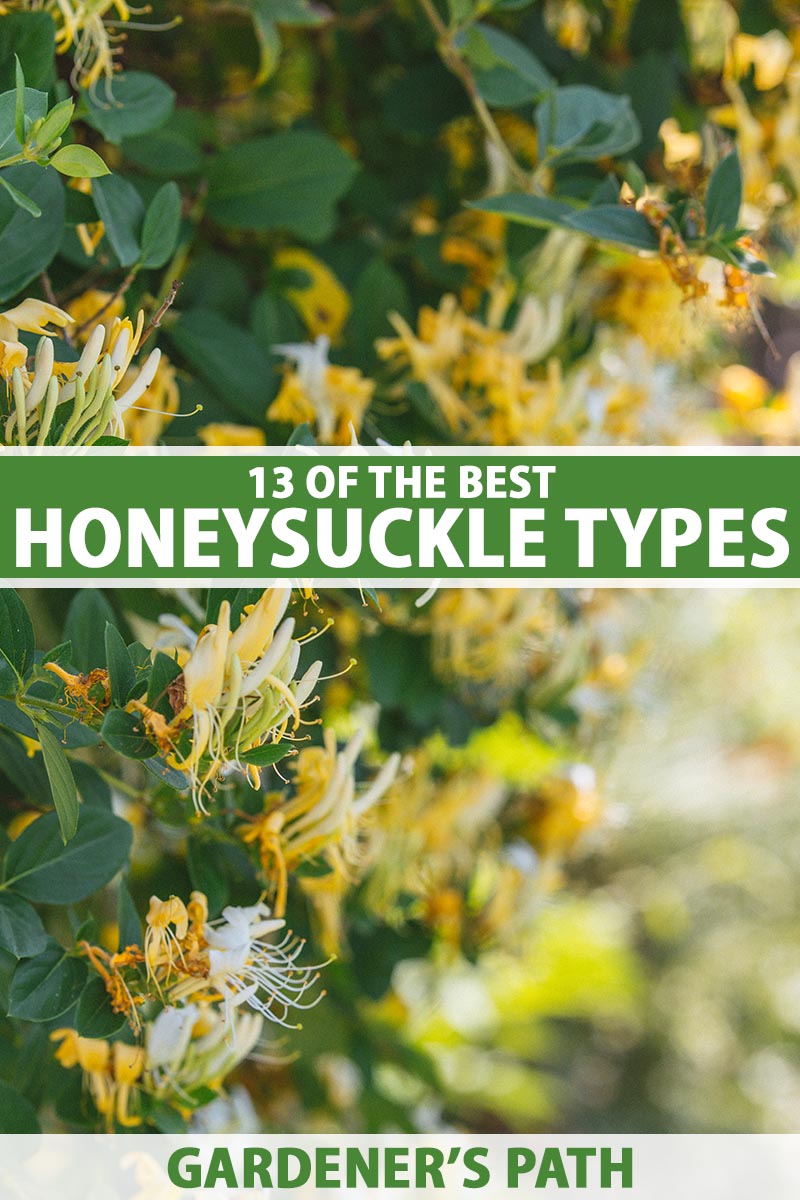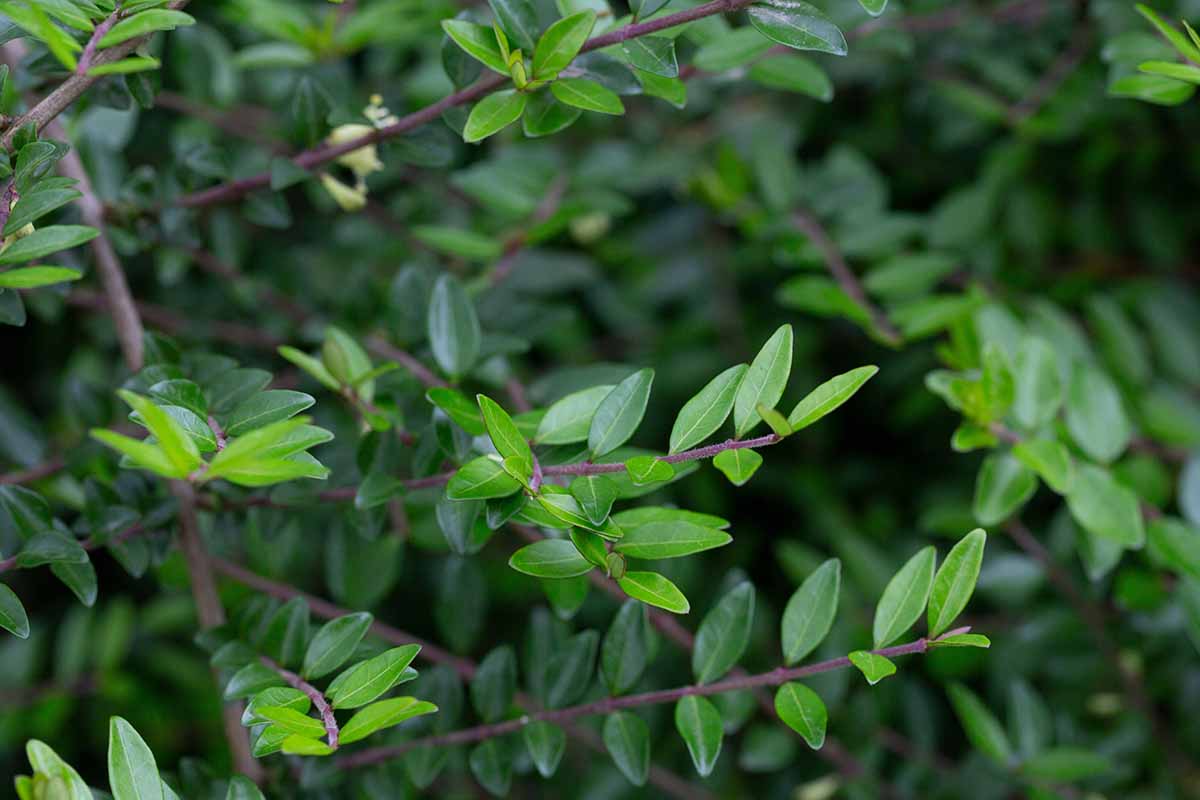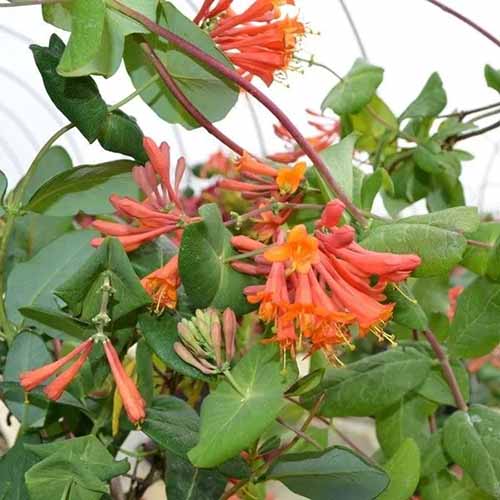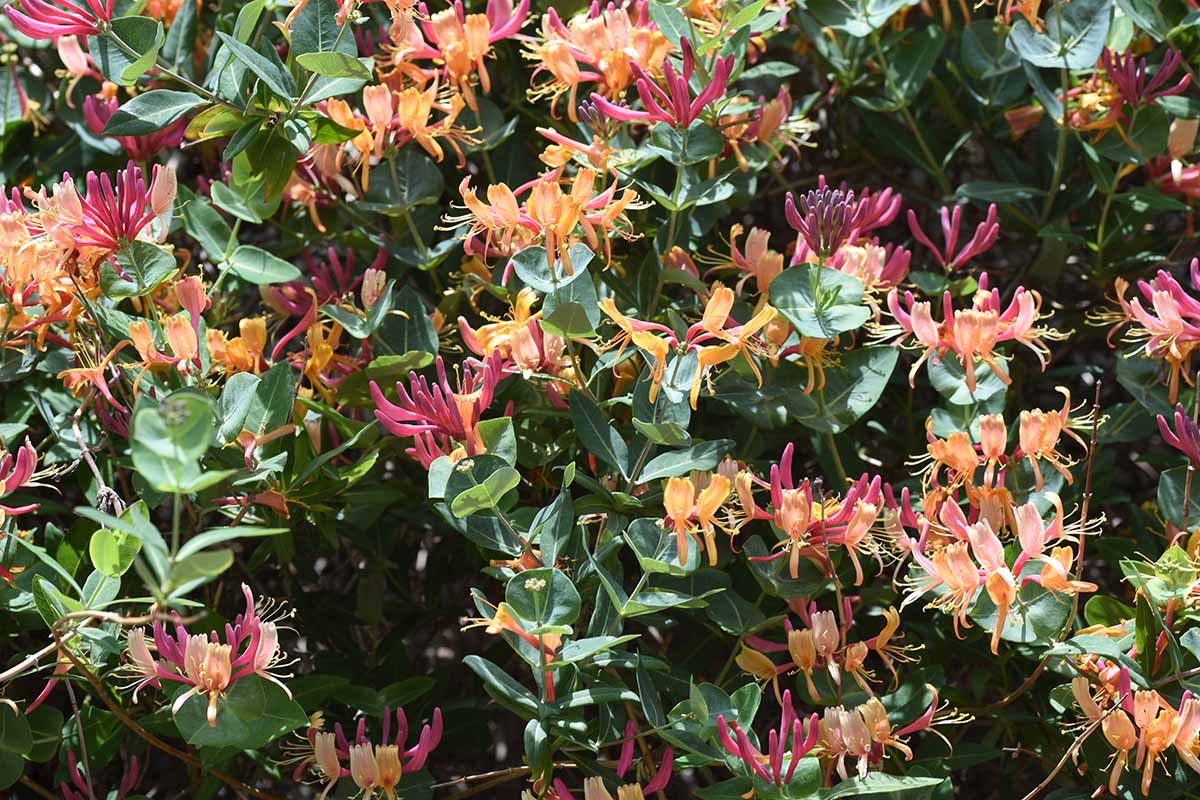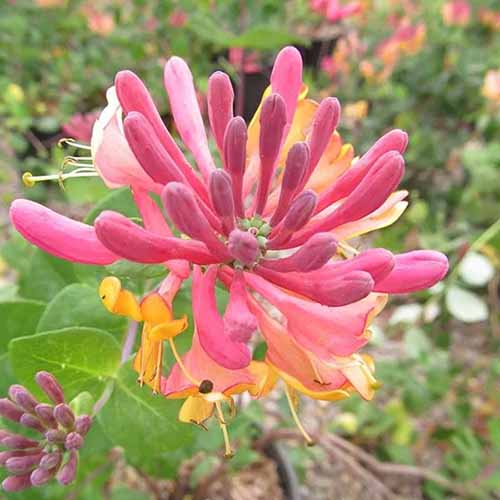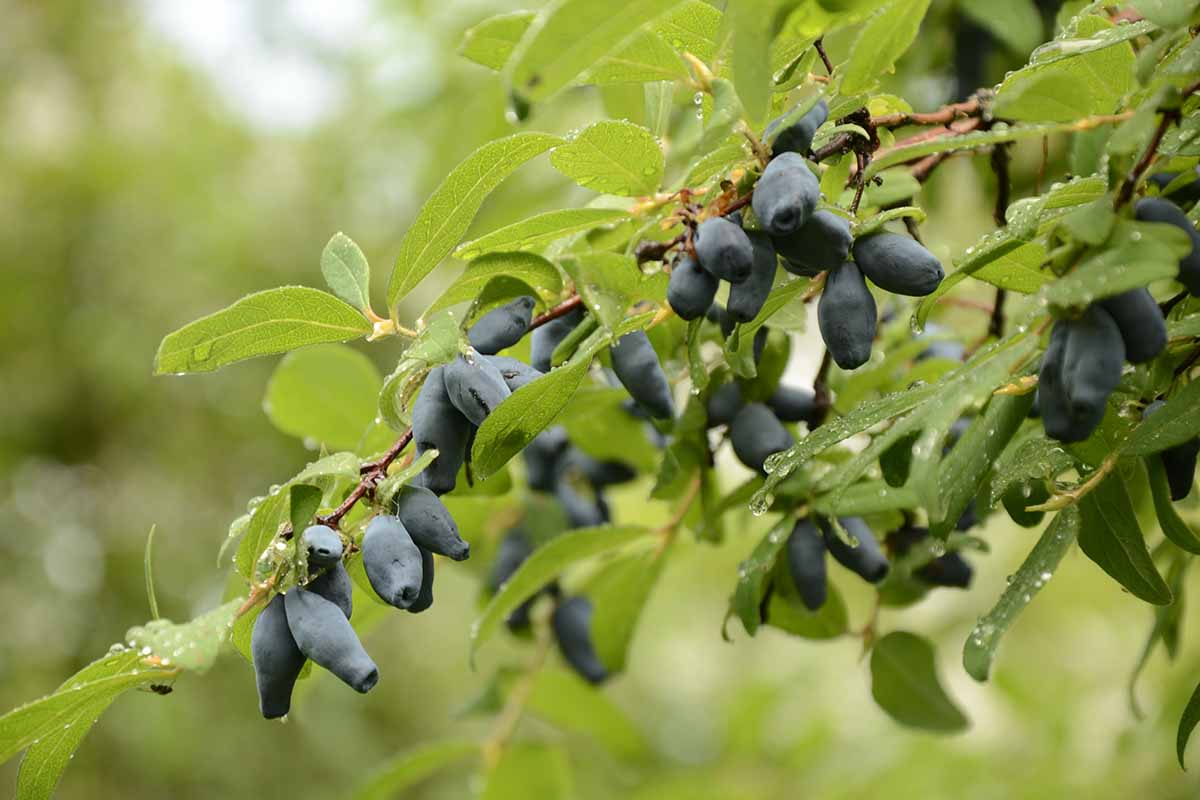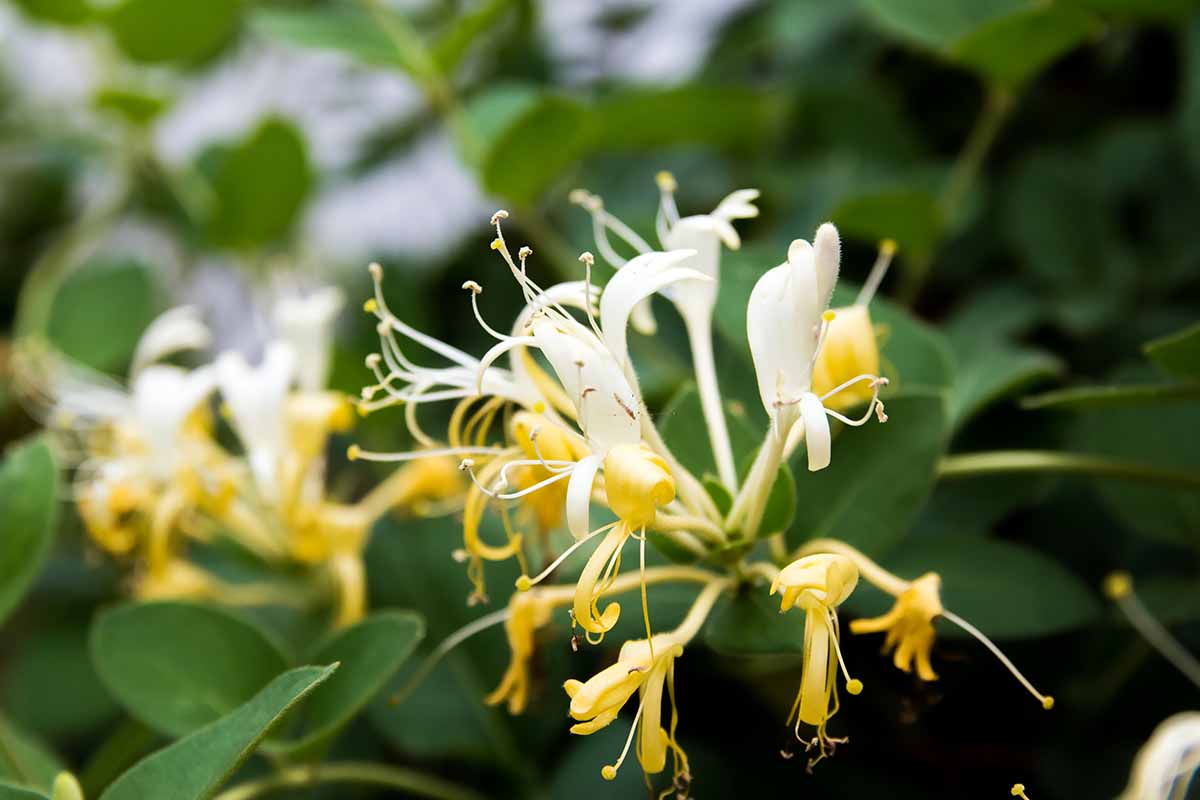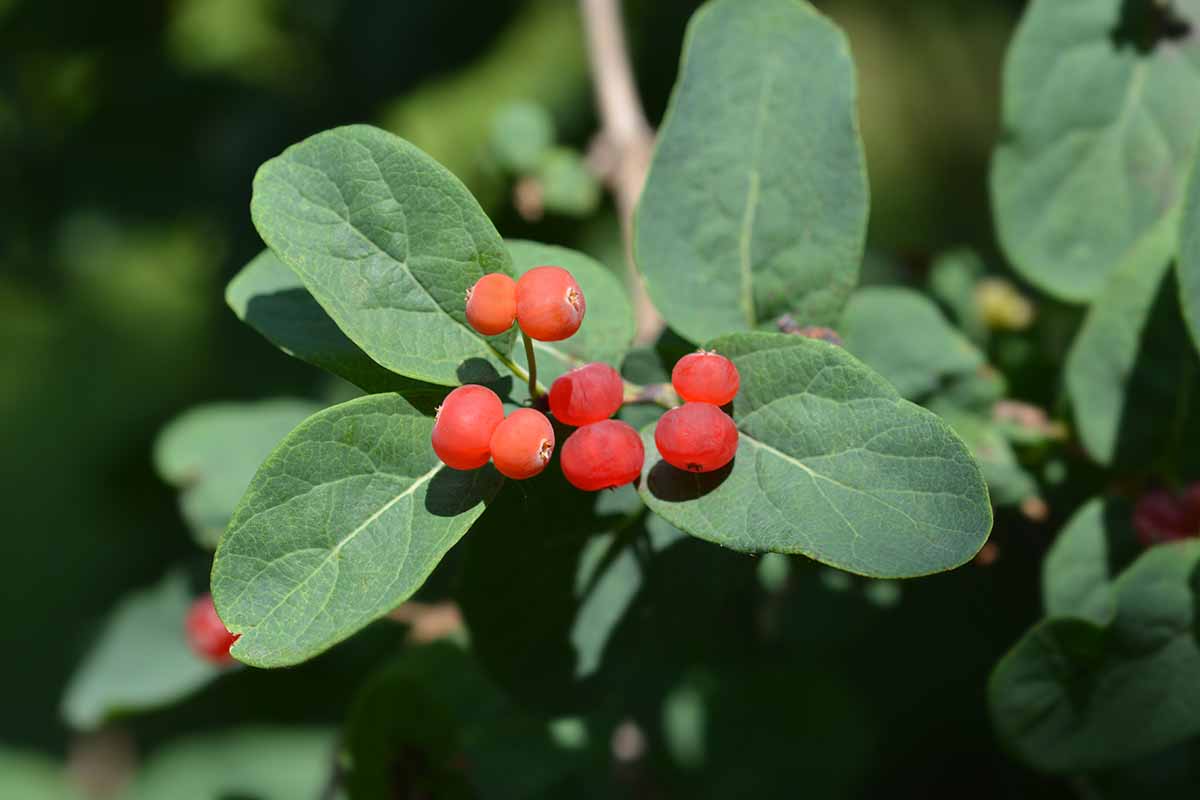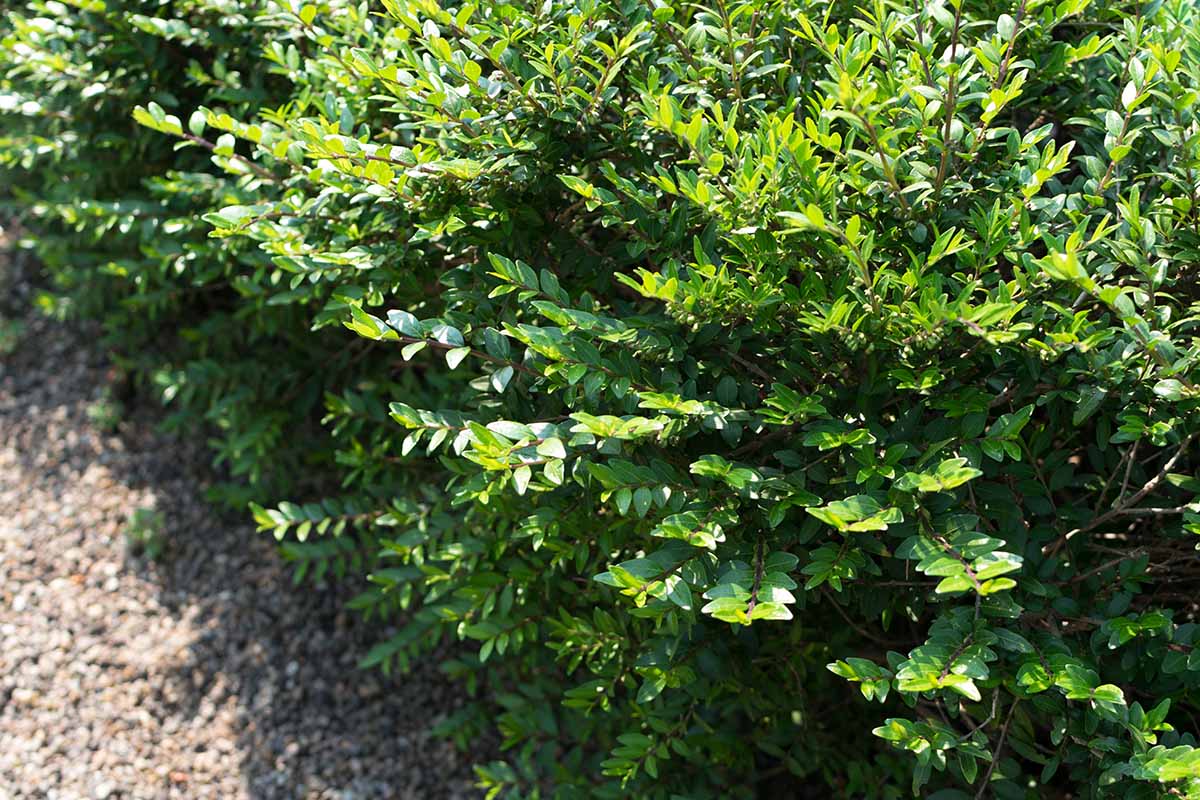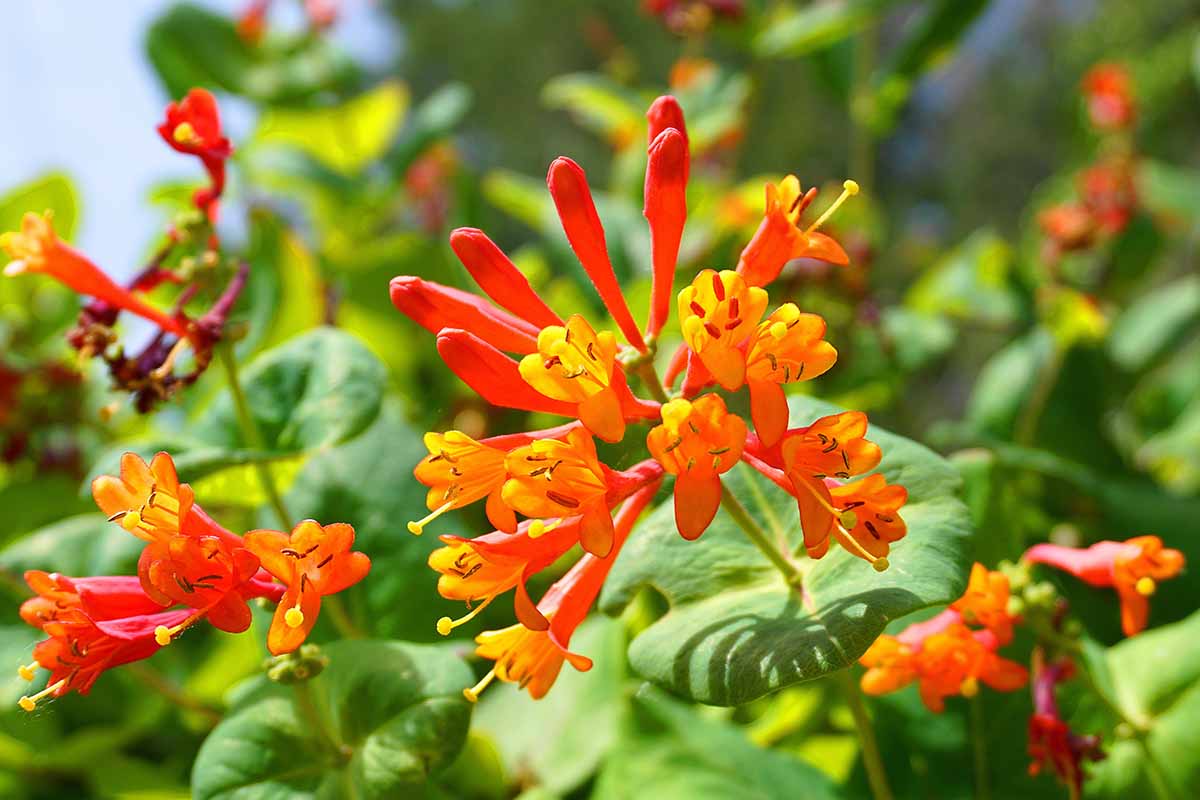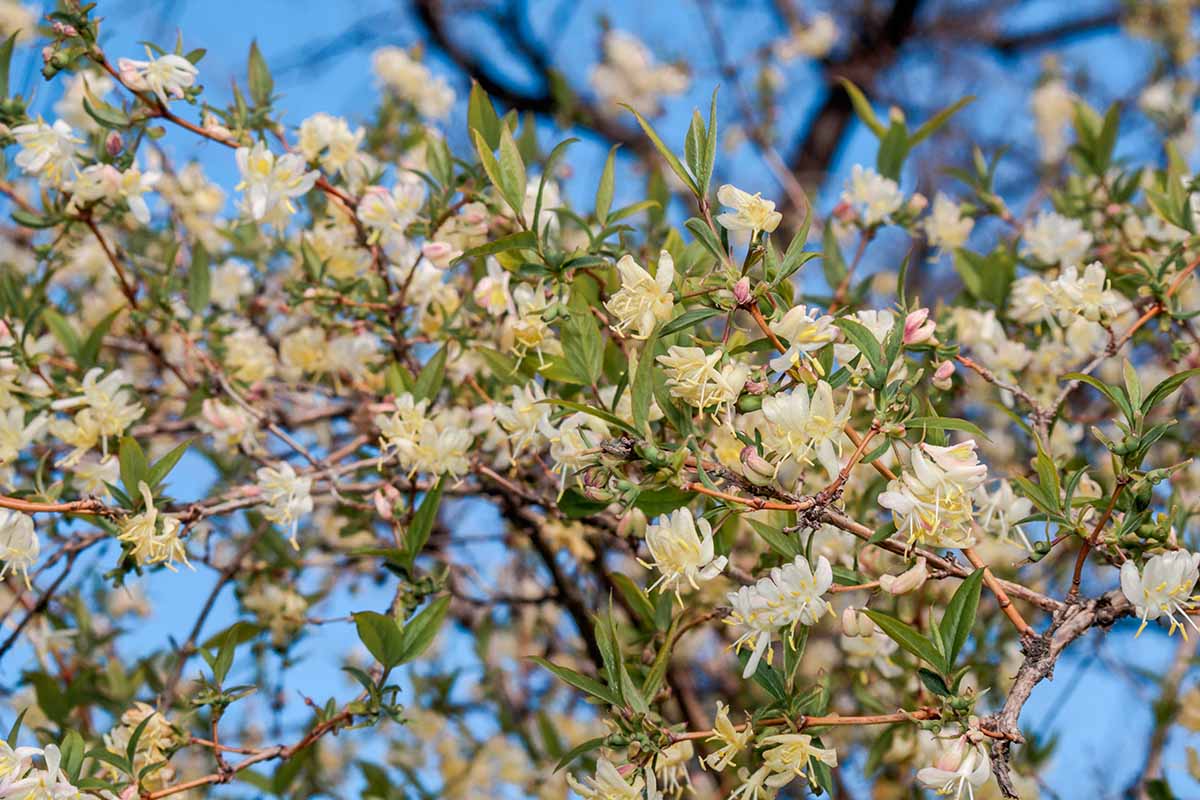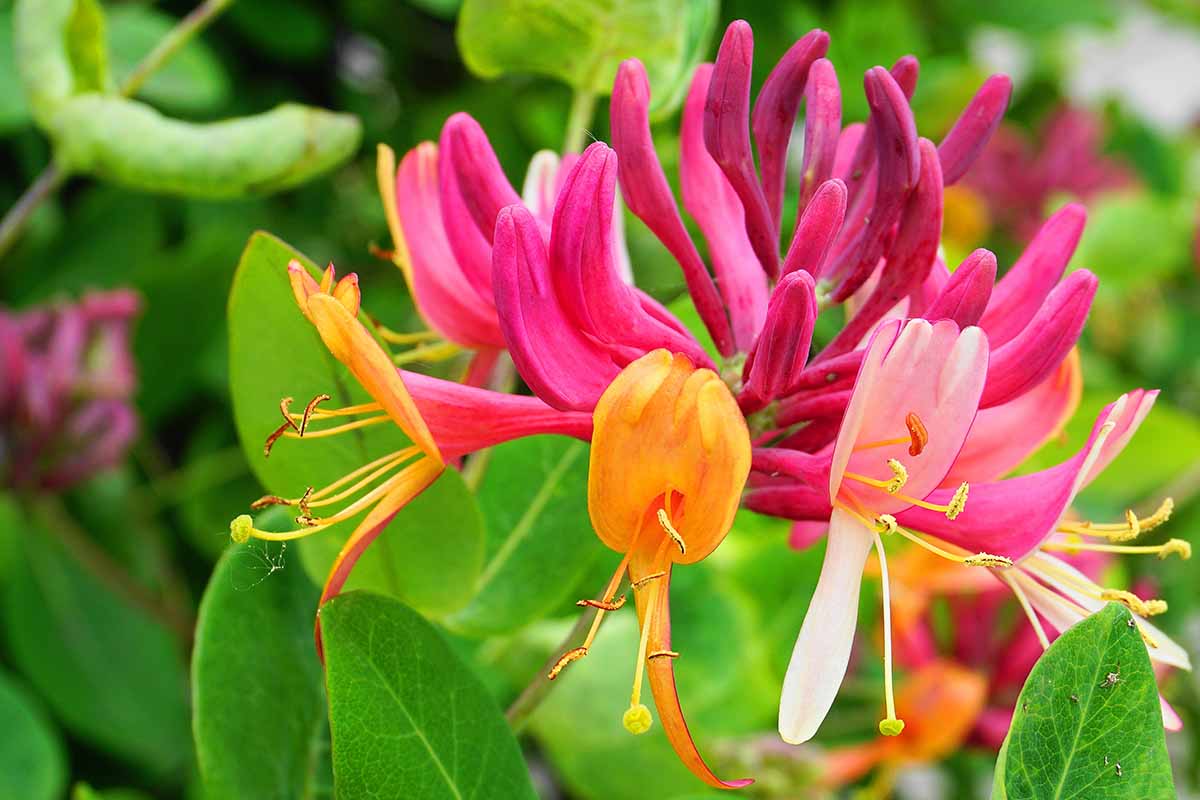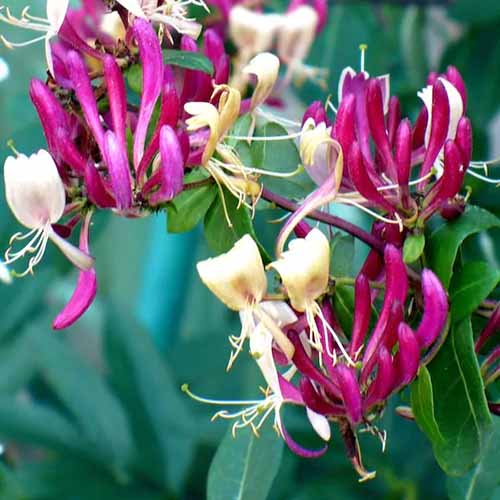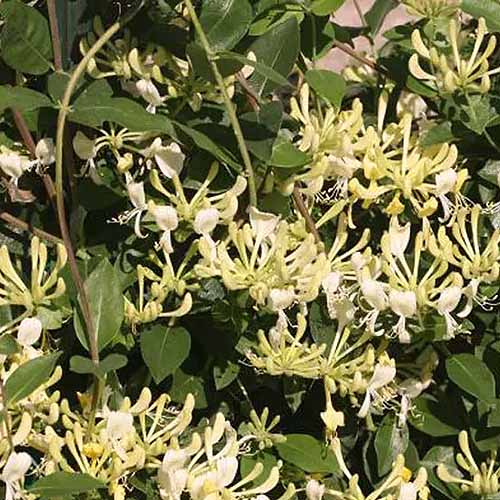With ease of care, fragrant blooms that attract pollinators, and striking fruits, these plants are hardy, attractive specimens that are worthwhile additions to the landscape. We link to vendors to help you find relevant products. If you buy from one of our links, we may earn a commission. But fear not. Now that you’re here, reading this guide, you don’t have to put in hours of honeysuckle research anymore! This guide will break down the best choices, in depth. Behold what awaits: Here’s a lil’ disclosure before we continue, real quick: Honeysuckle grows vigorously, which can sometimes result in aggressive and/or invasive growing tendencies. However, with proper species selection and a healthy dose of attentive gardening, it’s possible to use this powerful growth habit in your favor and cultivate vibrant, lush specimens that don’t take over your other plantings. But it goes without saying that you should definitely follow local laws. If you can’t legally plant honeysuckle in your area, then don’t. But if you can, then here are some excellent options:
1. Alpine
Hailing from the mountainous forests of central and southern Europe, L. alpigena has a maximum height of eight feet and can be grown in USDA Hardiness Zones 5 to 7. It bears cherry-looking fruits of a brilliant red shade, lustrous dark green leaves, and yellowish flowers tinged with shades of dark red. A semi-evergreen shrub, it has a branched and erect growing habit. What makes this species particularly striking is the large size of its fruits and leaves, along with its lengthy flower stems. A notable cultivar is ‘Nana,’ a variety that grows slow and low, with a maximum height of three feet.
2. Box
A Chinese-native, L. nitida is primarily valued for its evergreen foliage in the landscape. Said leaves are about half an inch long, rounded, and arranged opposite each other along the stem. The branches arch gracefully, which gives this five- to eight-foot-tall shrub an air of elegance. Its vegetative parts look pretty similar to the Japanese honeysuckle, except for having blood-red berries instead of black ones. It also grows a bit smaller, reaching a maximum height and width of 10 feet in Zones 3 to 6. If you ever wanted a honeysuckle that looks like the love-child of a Boston fern and a boxwood hedge, then this is the Lonicera for you. Thunderbolt Box The Thunderbolt™ box honeysuckle is a variety that’s more fragrant and cold-hardy than the standard species plant. Pick one up now from Nature Hills Nursery.
3. Brown’s
Brown’s honeysuckle is a catch-all term for a group of hybrids, the parents being L. sempervirens and L hirsuta. When compared to L. sempervirens, L. x brownii has smaller flowers that are more orange than red. Reaching a maximum length of eight to 12 feet, these deciduous plants are hardier and less vigorous, growing in Zones 4 to 7. So if the idea of a tougher, slower-growing, and orange-flowering trumpet honeysuckle is appealing, then this is the Lonicera for you. Some cool varieties of this hybrid are available. ‘Dropmore Scarlet’ blooms heavily and is even more cold-hardy than the standard. ‘Mandarin’s Brown’ is a berryless version, with flowers that are orange-red on the outside, and orange-yellow on the inside. ‘Dropmore Scarlet’ ‘Dropmore Scarlet’ can be purchased from Nature Hills Nursery.
4. Burmese
With a name like giant Burmese honeysuckle, L. hildebrandiana is proof that bigger is sometimes better. Native to China, this evergreen vine grows to a maximum supported height of 50 to 60 feet, and has glossy, dark green leaves that reach a mature length of six inches. All that combined with massive green berries, plus six-inch-long yellow flowers, and this specimen earns the title of world’s largest Lonicera in every category. The coldest temperature that L. hildebrandiana can tolerate is about 20°F, so Zone 9 is the furthest north you’d want to go with this thing. Giant Burmese California residents can purchase giant Burmese honeysuckle from Plants Express.
5. Goldflame
Another hybrid species, it’s not certain who the parents of L. x heckrottii are, although they’re purported to be L. sempervirens and L. americana. This semi-evergreen vining beauty is straight-up gorgeous, with deep carmine-pink on the outside of the flower petals that transitions into creamy orange-yellow throats on the inside. Its leaves are also stunning: blue-green ovals joined at the petiole under the flowers, creating a foliar disk in the background. It reaches a maximum height of 20 feet and grows best in Zones 4 to 9. L. x heckrottii is also highly disease-resistant. That, in combo with its looks, earned this plant the prestigious Award of Garden Merit from the Royal Horticultural Society. Well-deserved, I say. Goldflame Goldflame honeysuckle plants are available from Nature Hills Nursery.
6. Honeyberry
Also known as the honeyberry or haskap, L. caerulea is native to North America, Europe, and Asia, growing in Zones 2 to 5. This dense, deciduous shrub can reach a height of six feet and has ovate, bright green leaves. Its small flowers are funnel-shaped and pale yellow in color. However, the fruits of the honeyberry honeysuckle are what make this a great specimen. It bears dark blue, antioxidant-rich fruits that ripen in late spring, which taste of blueberries with a hint of raspberry and/or black currant. Honeyberry fruits can be eaten fresh, but are also delicious in jams, jellies, preserves, syrup, smoothies, ice cream, and even wine. In order to produce fruits, you’ll need to have at least two different cultivars planted close together for cross-pollination. ‘Tundra’ produces large, firm fruits and has powdery mildew resistance. ‘Borealis’ also has large fruits, and is reputed to be one of the best-tasting cultivars. ‘Blue Lightning,’ a popular Russian cultivar, produces high yields of sweet-tart fruits. Honeyberry Burpee has bare root honeyberry transplants available.
7. Japanese
Honeysuckles are notoriously capable of choking out other plants with their invasively vigorous growth rates, if you’re not careful – and L. japonica is one that requires extra caution. Capable of growing in Zones 4 to 9, this semi-evergreen vine is capable of growing up to 30 feet in length, and will often twine around nearby structures or upright plants. This Japanese native has fragrant, white flowers that yellow with age, and it bears small black fruits. Along with being a fragrant ornamental specimen that provides winter forage for deer, L. japonica is a fine choice for securing unstable or eroded banks. It’s more likely than not that you’ll be banned from planting it… but if it’s legal where you are, then have at it! If yellow flowers appeal to you more than white ones, ‘Hall’s Prolific’ cuts to the chase right away, with flowers that quickly yellow after opening. ‘Purpurea’ is a cultivar with purple-tinged foliage, which looks pretty neat, in a chameleon plant sort of way. ‘Halliana’ is an especially vigorous specimen with fork-tipped flower petals that turn light orange with age. ‘Haliana’ ‘Haliana’ can be purchased from Plants Express for shipping in California. Read up on how to care for this species here.
8. Morrow
Originally from Japan, L. morrowii is a deciduous and bushy specimen. It’s also invasive in many areas, so proceed with caution. A cultivar worth noting is ‘Xanthocarpa,’ which has flowers that stay white, and yellow fruits instead of the standard blood-red hue.
9. Perfoliate
A twining deciduous vine native to Eurasia, this species can be grown in Zones 5 to 8. Growing up to 20 feet in height, L. caprifolium has orange-red fruits as well as pink-tinged white flowers that open in summer. This sets it apart from most other honeysuckles, which bloom in the springtime. These flowers are so long that they’re primarily pollinated by nocturnal hawk moths, one of the only insect species with mouthparts lengthy enough to actually reach the nectar. The upper leaves of this plant are perfoliate, meaning the stem sticks into and continues through the center of the leaves, similar to a straw going through a plastic drink lid. It’s a very unique look for foliage that draws the eye way up the stem towards the beautiful blooms.
10. Privet
L. pileata is pretty similar to L. nitida, save for having more elongated leaves that are half an inch to an inch in length. Possessing wider-than-normal leaves for a Lonicera, this deciduous shrub looks good in a season when most other plants are barren and dormant. It also rocks the standard honeysuckle fragrance with a hint of lemon – an unexpected, yet appreciated scent in a winter garden. The branches don’t arch as much as they stick straight out, though… kinda like a box honeysuckle stuck its finger in an electrical socket, which I’ll admit is a weird and unnecessary visual! Privet Honeysuckle This specimen can be purchased from Nature Hills Nursery.
11. Trumpet
A North American native, L. sempervirens grows best in Zones 4 to 9. This vining, semi-evergreen species has bright red flowers and berries, plus leaves similar to those of the perfoliate honeysuckle. It can grow up to 20 feet in height, and can potentially go higher on a suitable support structure. While most honeysuckles are aggressive growers to an invasive degree, this one is vigorous without encroaching on your other plantings. It’s a welcome break from the standard routine of constant pruning to ensure that your Lonicera plantings don’t cause an ecological crisis. You can expect to attract quite a few hummingbirds and songbirds with this plant, too! ‘Major Wheeler’ The ‘Sulphurea’ variety has yellow flowers with bright green foliage, and ‘Major Wheeler’ has crimson flowers that bloom all season long. Nature Hills Nursery offers the ‘Major Wheeler’ cultivar.
12. Winter
As a general rule, most plants don’t flower in wintertime… but I guess nobody told the winter honeysuckle that. Growing in Zones 4 to 8 to a maximum height of 15 feet, the small, white flowers of L. fragrantissima bloom as early as January. These are followed by bright red berries. The early-to-leaf foliage also makes for a good screen, if privacy is what you want. It’ll even attract animals to its berries and blooms, which’ll keep critters visiting your yard year-round. Overall, this Chinese-native Lonicera is a worthy plant for picking up the visual slack during the cold, dreary months.
13. Woodbine
Native to Europe and northern Africa, L. periclymenum is one versatile honeysuckle. Best cultivated in Zones 4 to 8, this deciduous plant can serve as a 20-foot twining vine that doubles as a screen when grown against and/or through fencing. It can even be trained as a ground cover! Cultivars worth mentioning: ‘Serotina,’ which has bright pink petals and whitish-yellow floral stems. ‘Peaches and Cream’ has magenta flower buds which mature into peachy-cream flowers. And thanks to its renowned fragrance, ‘Scentsation’ is another top-tier choice. ‘Peaches and Cream’ ‘Peaches and Cream plants are available from Nature Hills Nursery. ‘Scentsation’ Pick up potted ‘Scentsation’ at Nature Hills Nursery too.
A Rhyme for Honeysuckle? Worth a Chuckle
There you have it, folks! A low-down on the best honeysuckles. Best is subjective, of course… but these are my personal favorites. Now that you’ve got some Lonicera ideas for the garden, you’ll have a blast growing them for yourself! Not quite sure how? We’ve got a general guide to growing honeysuckles for you right here. Do you have a different variety so share that wasn’t mentioned here? Questions? Comments? Want to check if your keyboard’s working? All that and more can be directed to the comments section below! I’d love to read, respond, and/or confirm that your keystrokes registered. If these (mostly) vining plants struck you as interesting, you’ll enjoy these vine-growing guides next:
Growing Flowering Vines in the GardenNative Vines for Your LandscapeAre Climbing Vines Harmful for Your Home?
